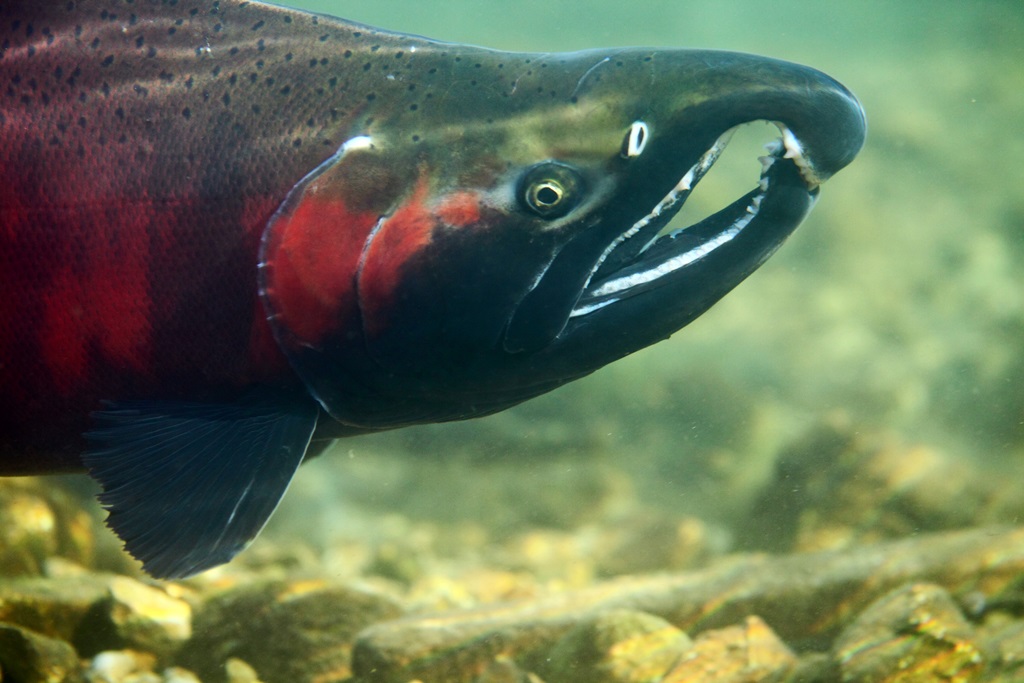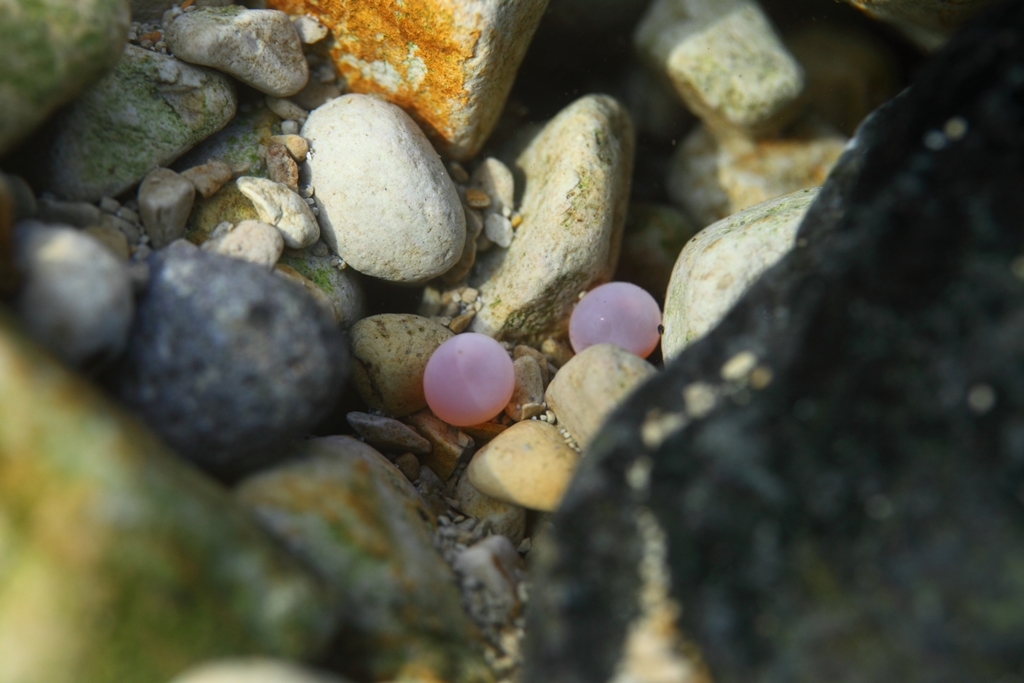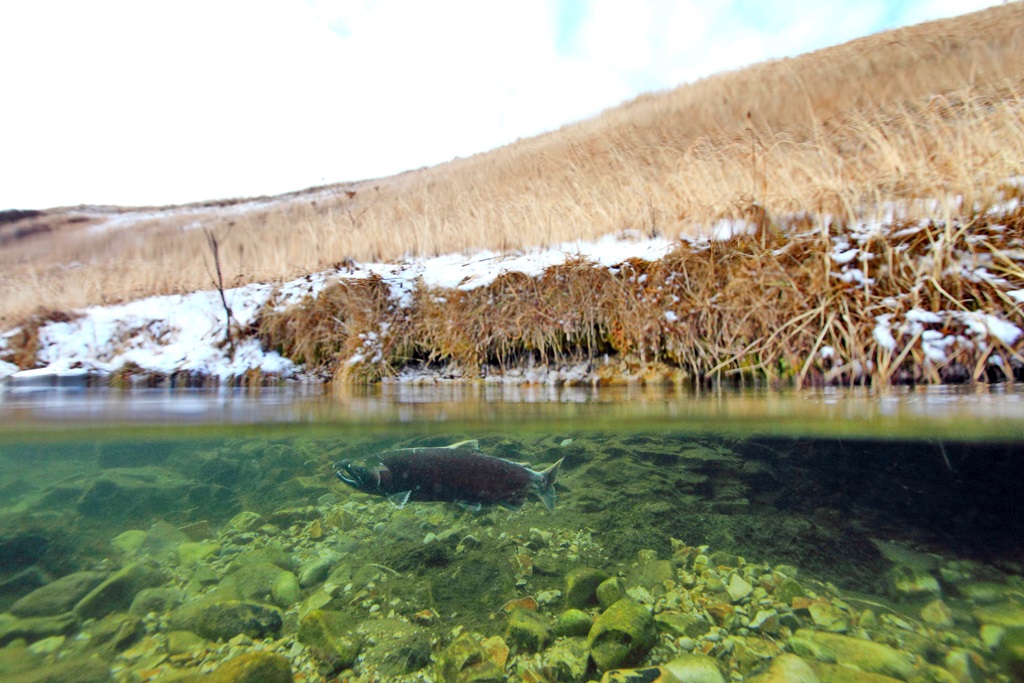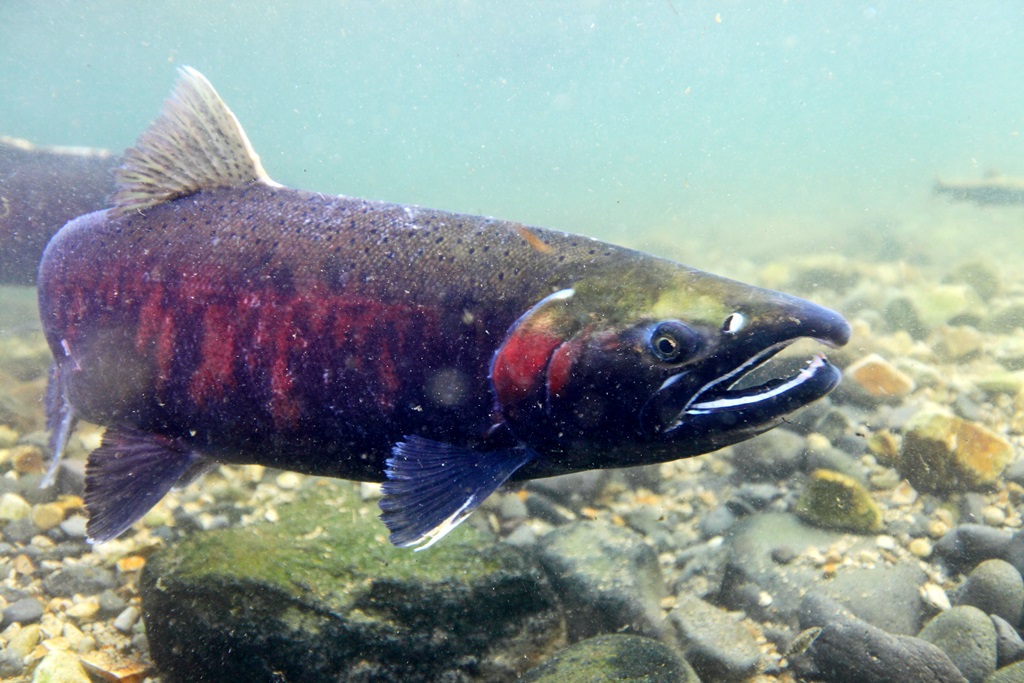These December days are the days when new life begins in the water bodies of Bering Island. The lakes are iced over, the coasts are covered with snow, but small unfreezing rivers and springs are a place of coho salmon spawning. Large bright crimson fish lay their eggs and then die to step aside and make way for the new generation.
Coho salmon (Oncorhynchus kisutch) or in Aleutian “kakida” is one of three Pacific Ocean salmons, which breed in rivers in the Commander Islands Reserve. This species is widely spread on Bering Island.

Photo by Evgeny Mamaev
Coho salmon is different from red salmon and humpback salmon because it has light silvery scales, which is why this species is also called silver salmon. Two forms of coho salmon live off the Commander Islands: anadromous (migrating) and fresh-water one, also called by the locals “baidarka”.
Rare endemic populations of nonmigratory coho salmon are included in the Red Data Book of Kamchatka. They can be observed only in 4 lakes of Bering Island and in 5 or 6 lakes on Kamchatka peninsula. A long time ago these lake had been a part of the Pacific Ocean. Unlike its counterpart, fresh-water coho salmon cannot go to the sea for feeding period. Instead, it migrates in the lake without making large groups.
The lifecycle of coho salmon, as that of every salmon, starts in the river, where they hatch. For a year, they stay in rivers and creeks eating various crustaceans and larva of water insects until they finally become smolts – small fish ready to live in salt water.

Photo by Evgeny Mamaev
After reaching its adulthood smalt salmon departs to its first and last big journey. In the ocean fish spends one third of its life – 1 or 2 years. There its color changes: dark back to hide from birds and light belly to hide from bigger fish. Adult coho salmon can swim 300 to 700 km feeding on small squids and zooplankton, which is abundant in the ocean. Later sexual maturity will lead them back to their home rivers for breeding.
It is curious that coho salmon usually returns to the exact spot, where it hatched. However, before that it goes from the mouth of the river up to its birth place. As other migrating species, coho salmon uses magnetic fields and polarized light to find its way home.

Photo by Evgeny Mamaev
Coho salmon breeding trip up the rivers of Bering Island starts in the middle of August and lasts until December, which is much longer than for other salmon species. That is why we differ three types of coho salmon: autumn, winter and summer ones, depending on the time of their spawning.
During spawning coho salmon changes its colors to more festive: crimson body, head and back become darker and the shape of the body changes. They acquire teeth and the “beak” hanging down to the lower jaw and a slight hump in the back. Females have lesser changes in color.
Every adult female ley thousands of eggs after coming back. Unlike Atlantic salmon or the majority of other vertebrates, Pacific salmon breeds once (this phenomenon is called semelparity) and then dies. During laying the eggs, salmon ages quickly and has no more life force. Such encoded program is an important instrument in local ecological chain. After dying salmon adds nitrogen, potassium and other nutrients into poor northern water bodies. These nutrients are essential for plants, fish, birds and animals. For example, on Bering Island seagulls, ravens and arctic foxes feed on dead coho salmon nearly for the whole winter.










